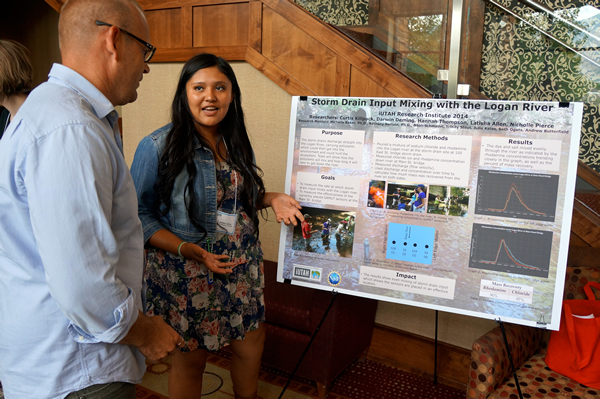News and Highlights
This is a list of past iUTAH EPSCoR news from 2012 to 2018.
April 4, 2016
Clean and plentiful: Logan residents enjoy some of region's cleanest drinking water
iUTAH researchers Doug Jackson-Smith, Courtney Flint, Andrea Armstrong, Taya Carothers, and Nancy Mesner were all featured in a recent news story in The Herald Journal. Here’s an excerpt:
“Issues we worry about with drinking water are in areas that have a lot of arsenic or heavy metals in there,” said Douglas Jackson-Smith, a USU sociology professor and one of the professors involved in the onset of Utah’s water future survey. “Anecdotally, that’s in the west side of Salt Lake City.”
The issues with drinking water are often concerning arsenic, groundwater sources, sediments and metals, said Nancy Mesner, a professor in the department of watershed sciences at USU and an extension specialist in water quality. Logan, however, has none of that, with Mesner claiming the drinking water is “some of the best (she has) ever seen.”
Jackson-Smith, Courtney Flint, Andrea Armstrong and Taya Carothers conducted an iUTAH study on Utah’s water future, which focused on perspectives from residents in different cities regarding their water issues. They studied 23 neighborhoods across 13 cities in Salt Lake County, Cache County and Wasatch County. In Logan neighborhoods, an average of 76 percent of residents who participated in the survey rated their drinking water quality as good or very good. The sample taken in Bridger neighborhood was found to be the lowest, at only 58 percent of the residents thinking highly of their drinking water. The survey found that 10 percent of Bridger respondents classified their drinking water as bad or very bad.
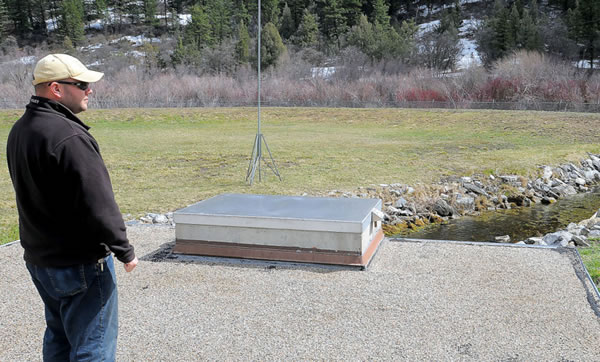
March 29, 2016
Hydrologist discusses impact of climate change on Utah's water supply
University of Utah professor, and iUTAH researcher Paul Brooks was recently featured on Fox 13 News. Here are a few highlights from Max Roth’s interview.
Most of Utah’s water resources come from snowmelt, but snowmelt run-off is becoming less predictable. “I think it’s hard to realize for most of us that live down here that water really is a limiting resource,” said Paul Brooks, a hydrologist and professor in the University of Utah’s department of Geology and Geophysics. His class is studying snowmelt at a long-term site in northern New Mexico.
“So, we’re comparing what’s happening to the snowpack there in wet and dry years, following fires and disturbance, with what happens here in the Wasatch Front and the larger area of the central Rocky Mountains,” he said.
Press: Fox 13 News
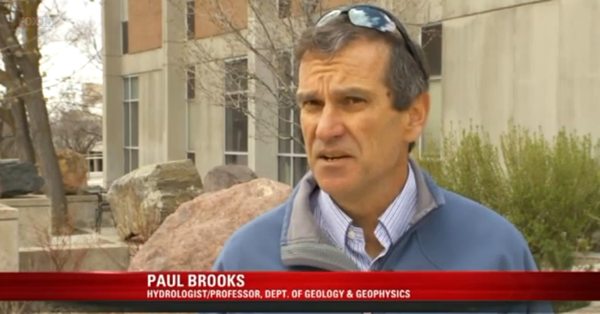
March 29, 2016
WSU recognizes students with sustainability award
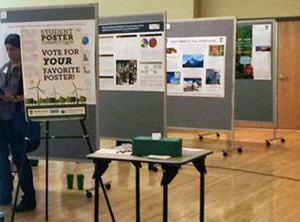
iUTAH researcher Dan Bedford shared news from Weber State University (WSU). Students Jenny Nistler and Leann Lyons, received the Environmental Issues Committee's annual Student Sustainability Research award for their poster.
The poster was on display at WSU’s Intermountain Sustainability Summit (ISS), placing 2nd or 3rd place in their respective categories. The Student Sustainability Research award, takes place separate from the ISS, and must be connected to a research project involving some primary research completed during this academic year (2015-2016) in the area of sustainability.
Dan Bedford is a professor of Geography at Weber State University. He was the co-principal investigator, along with Carla Trentelman, of an iUTAH Research Catalyst Grant in 2013, which involved Water Sustainability on the WSU campus.
March 28, 2016
iUTAH researchers from USU funded by EPA for Water Reuse
The U.S. Environmental Protection Agency (EPA) has announced funding to five institutions to research human and ecological health impacts associated with water reuse and conservation practices.
Institutions received funding through EPA’s Science to Achieve Results (STAR) program. The five institutions awarded the funding received a total of $3.3 million between them. Those institutions are: the University of Illinois at Urbana-Champaign, Utah State University, University of Nevada - Las Vegas, University of California Riverside and the Water Environment Research Foundation (WERF).
The research being done through the five institutions and EPA will evaluate how reclaimed water applications such as drinking water reuse, replenishing groundwater and irrigation can affect public and ecological health.
EPA announced these grants in conjunction with the White House Water Summit, which was held to raise awareness of water issues and potential solutions in the United States. iUTAH researchers Ryan Dupont, Doug Jackson-Smith, and Sarah Null are named as three of five principal investigators from Utah State University.
More information about these grants is available here.
March 28, 2016
iUTAH attends Intermountain Sustainability Summit, at WSU
While at 2016 Intermountain Sustainability Summit, Andreas Leidolf, Assistant Director of iUTAH was interviewed by The Signpost reporter Nathan Beach. Here is an excerpt from the interview:
“One program that we have going is called the iUTAH [Summer Research] Institute,” he said. “It is geared toward high school students as well as beginning college students. It takes place at University of Utah and is a one-week, summer research experience.”
Leidolf said iUTAH has programs to help improve the environment and help others to be more environmentally minded. “We have three watersheds with monitors. We stream information live with a 15-minute delay to a website that is open to the public so anybody, like researchers, people in the public or water managers, can go to our website and look at our water quality data,” he said.
iUTAH both attended and sponsored this year's Intermountain Sustainability Summit held on March 24 – 25 at Weber State University in Ogden, Utah.
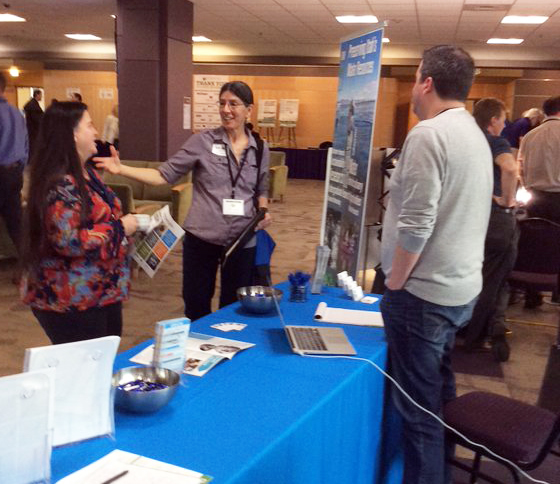
March 17, 2016
iUTAH Institute takes teachers, students back to Salt Lake City
The iUTAH Summer Research Institute will return to the Red Butte Creek watershed for five days, starting July 11, 2016. Beginning in 2013, the Institute has encouraged an interest in water science by including high school students, teachers, and undergraduates in iUTAH-related research projects. Each year, the program has traveled to different research sites, institutions, and watersheds, including Red Butte Creek, the Logan River, and the Provo River.
Led by faculty, graduate students, and postdoctoral researchers, participants become involved with iUTAH-related research in each watershed. Past lessons include learning about vegetation, stream health, stormwater management, computer modeling, views on water issues, and the effects of insects on forest hydrology.
In addition to this multidisciplinary focus, participants learn how to analyze and interpret data, and present their findings through a poster shared at the annual iUTAH Symposium. Coordinators Louisa Stark, University of Utah professor, and Molly Malone, both of the University of Utah’s Genetic Science Learning Center, use the information gathered at the Institute to create curriculum for teachers. This resource for Utah educators is available online, and updated after each program ends.
Throughout the program’s three-year history, the Institute has engaged 23 high school students, 22 undergraduate students, and 24 secondary education teachers. Surveys of student participants confirm an increased interest in pursuing scientific careers. Teachers say that the themes, research, and experiences will impact their future classroom lessons.
Thanks to the leadership of Louisa Stark and Molly Malone, and the dedication of iUTAH researchers, the Institute is moving into another promising year of water science exploration. With the program’s return to Red Butte Creek, participants will dive into new research at the watershed, engage in near-peer mentorship, and gain new tools and inspiration to continue pursuing science education in their own. Applications for the upcoming iUTAH Summer Research Institution are now being accepted online through May 1, 2016.
